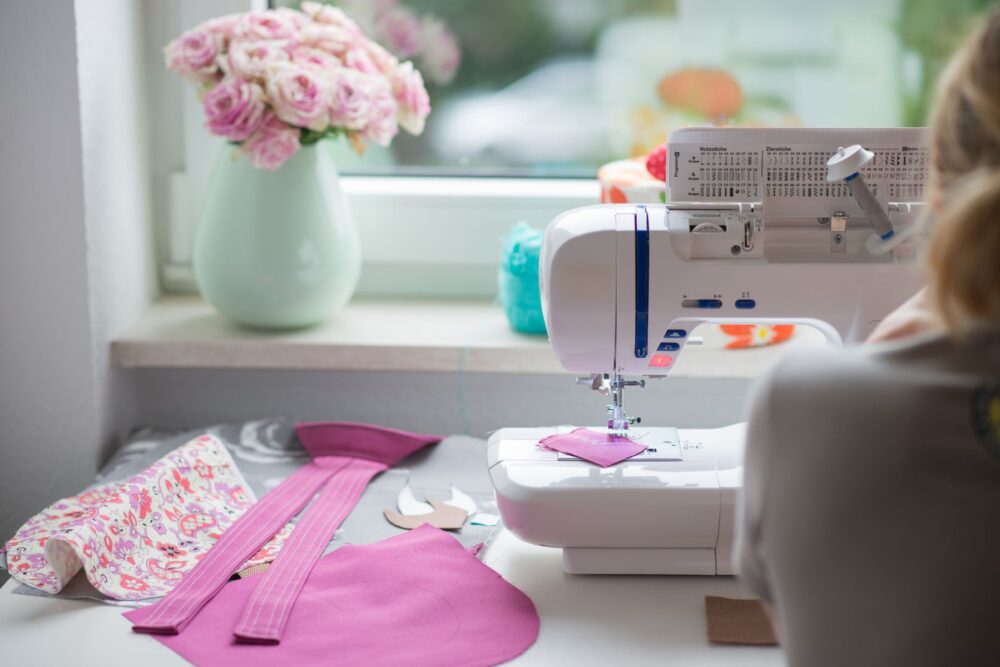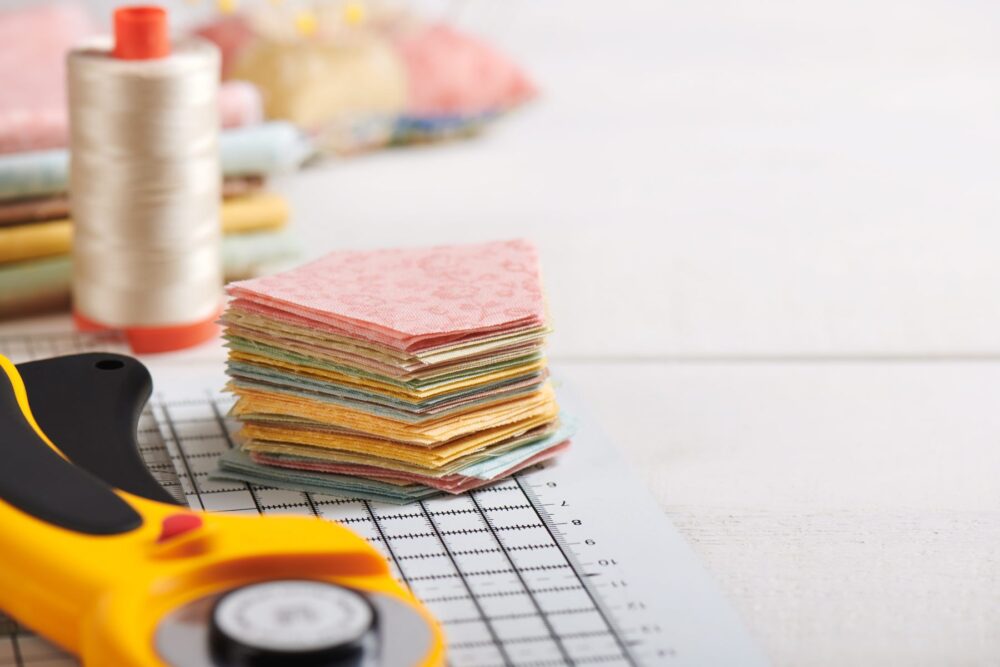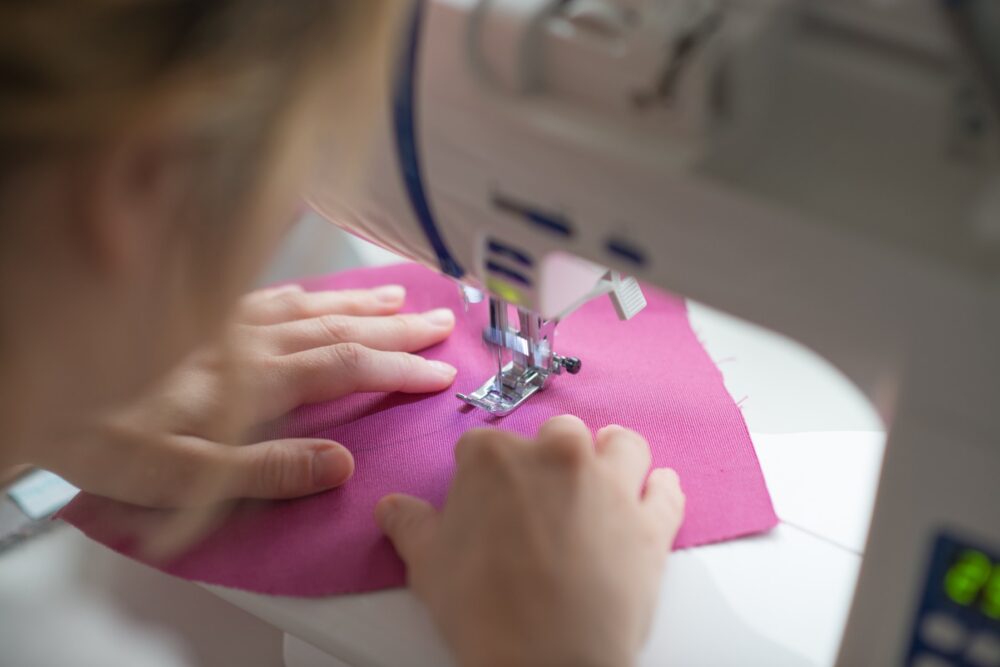How to make more time for sewing
Learn how to make more time for sewing with these helpful tips and ideas! From squeezing in sewing time whenever possible to organizing your projects, you’ll be able to dedicate more time to sewing without always completing a project. Find out how!

If you’re struggling to find enough time for your beloved sewing hobby, in this article, we’ll explore different ways on how to make more time for sewing. You’ll feel happy and satisfied even when not spending time at your sewing machine. Whether you’re a busy parent or have a demanding job, these tips will help you carve out more time for sewing and enjoy your craft even on the busiest of days.
As a sewing enthusiast, I know the struggle of finding enough time to indulge in my favorite hobby. Between work, family responsibilities, and daily chores, it can be challenging to squeeze in some quality sewing time. But I learned that with some smart time management and organizational skills, you can make more time for sewing without sacrificing other important tasks.
How to make more time for sewing even in the busiest of days
For me sewing is not just a hobby, it’s a passion that ignites creativity, fosters relaxation, and even contributes to mental wellness. The joy of turning fabric into something beautiful and functional is immensely satisfying. Let’s see how to make more time for sewing with just a few tweaks to our day-to-day lifestyle.
1. Squeeze in sewing time whenever possible
Finding time for sewing can seem daunting amidst our busy schedules, but there are ways to incorporate it into our daily lives. Sewing time doesn’t necessarily mean sitting at your machine for hours at a stretch. Even planning, researching or preparing mean sewing time.
Incorporate sewing into your daily routine
- Consider dedicating a small block of time each day to sewing; even 10-15 minutes can make a difference. There are days when I’m happy to be able to sew a single seam in a project I’ve been working on for ages!
- You can also combine sewing with other activities, such as listening to an audiobook or catching up on your favorite podcast, making the sewing process both productive and enjoyable. Or talk to relatives and friends on the phone while sewing, multitasking at its finest.
- During your lunch break or commute time, use that time to hand sew something small like closing the seam in a project with a ladder stitch, sewing a button or adding some hand embroidery to a finished project.
Plan your sewing projects in detail
- Draw a rough template of the next project on a notepad. Plan what you’d like to sew then illustrate and label it in your sketchpad, so when you sit down next time, you’ll know exactly what to do.
- Plan out your next project in detail before sewing it. Build a plan for every little step involved and practice it in your head whenever possible, for example when waiting in line at the grocery shop or when doing dishes. This way, you can still make progress on your sewing projects without adding extra time to your schedule. And when you finally find time to sit down and sew, the process will go a lot faster and smoother because there is continuity in your mind and sewing.
- Before engaging in the actual sewing of the project, spend a little bit of time in the sewing room every day, preparing for your project, based on the details you outlined when you planned it. Print out and cut the patterns, cut out the fabrics, prepare the matching thread and the tools needed for sewing etc Every little detail that brings you closer to the project counts towards dedicating more time to sewing.

2. Organize your projects and prioritize
One of the significant ways to make more time to sew is by staying organized. Keeping track of your projects, materials, and deadlines will help you make the most out of your sewing time.
- Create a to-do list or a project tracker where you can see all your ongoing projects at once. This will help you prioritize and stay focused on what needs to be done first.
- Make a dedicated sewing space in your home, whether it’s a spare room or just a corner of your living room. Having all your materials and tools easily accessible and in one place will save time and minimize distractions.
- Use storage containers or labeling systems to keep your supplies organized. This way, you’ll know exactly where everything is, and you won’t waste time searching for a specific item.
- Plan out your sewing projects in advance, as mentioned above, including the estimated time it will take to complete each one. This will help you manage your time better and avoid taking on more than you can handle.
- Make sure your workspace is clean, clutter-free, and inspiring. A well-organized sewing area can make a huge difference in your productivity and motivation to sew.
3. Say no to distractions
In today’s digital age, it’s easy to get distracted by social media, emails, or other notifications. But these distractions can eat up a significant amount of time that could have been spent sewing.
- Consider setting specific times during the day to check your phone or email instead of constantly checking them throughout the day. This will help you stay focused on your sewing projects for longer periods.
- If possible, designate a specific time and place for sewing without any distractions. This could be early in the morning, late at night, or during your lunch break at work.
- Communicate with friends and family about your sewing schedule and ask for their understanding and support. This will help reduce interruptions while you’re trying to sew. Sometimes, when I have a challenging project, I put a “sewing in progress” sign on the door so my family knows not to disturb me.
4. Remember to take breaks
While it might seem counterproductive, taking breaks is essential in making more time for sewing. It’s essential to rest your mind and body to avoid burnout, keep your motivation flowing and your productiveness up.
- Set a timer or reminder to take breaks every hour or so. Use this time to stretch, have a snack, a glass of water or go for a short walk.
- If you’re working on a long project, break it down into smaller tasks and take breaks in between to avoid feeling overwhelmed.
- Use your break time to get inspired by looking at sewing blogs, books, or watching tutorials. This will keep you motivated and excited to get back to your project.
5. Set achievable sewing goals and stick to them
Setting realistic goals for your sewing projects helps in managing time effectively. We all dream about completing a project in a day, but it’s not always possible.
- Choose projects that are in line with your sewing skills.
- Break down your goals into smaller achievable tasks and assign deadlines to each one. This will help you stay on track and make progress every day.
- Be flexible with your goals and adapt to any changes that may arise. Don’t beat yourself up if you’re unable to complete a task within the set time, sewing is not always easy and there are many times when things don’t go as planned. So cut yourself a slack!

6. Dedicate more time to sewing without actually completing a sewing project
There are numerous ways to dedicate time to your sewing passion without necessarily having to complete a project. Spending time researching patterns, watching tutorial videos, or organizing your sewing space can all contribute to your sewing endeavors. These activities not only enrich your sewing knowledge and skills but also keep you engaged with your hobby. Here are some of the things I do that I consider time spent for sewing:
- Visiting fabric stores or online shops and browsing for new fabrics, notions and tools
- Reading sewing magazines, books, and blogs to learn about new techniques and trends
- Attending sewing classes or workshops to improve my skills
- Searching for tricks to make my projects faster and more accurate. For example, learning how to cut fabric efficiently or using various sewing machine feet for different techniques.
- Brainstorming ideas for future projects.
- Experimenting with scraps and practicing new stitches.
- Taking care of my sewing tools and machines by cleaning and maintaining them regularly
- Tidying up my sewing room
7. Sew quick and easy sewing projects that can be done in no time
If you’re pressed for time and still want to get your fix with an actual project to sew, there are plenty of quick and easy ideas to satisfy your craving and get you seated at the machine.
Consider simple projects like a tote bag, pillowcases, scarves, or hair ties that can be completed in less than an hour. These projects are not only great for utilizing small pockets of time but also provide instant gratification.
My website is a great collection of such projects since I’m also a busy mom struggling to find time for sewing. I’ve created many simple and quick tutorials that are perfect for beginners and experienced sewers alike and won’t take a lot of time to complete. Check them out and make the most out of your sewing time!
Frequently Asked Questions
How can I find time to sew with a full-time job?
Start by evaluating your daily schedule and identify any small time slots you can dedicate to sewing. Early mornings and weekends can be great times to sew in peace.
What are some essential sewing projects for beginners?
Some great beginner projects include tote bags, simple skirts, pillowcases, and aprons. These projects provide a great foundation for sewing basics.
How do I organize my sewing space on a budget?
Utilize items you already have at home, such as jars for storing buttons, bookshelves for fabric, and pegboards for hanging tools. Use fabric scraps to sew items that you might need for storage and help you keep your sewing room organized, clutter free and tidy.
Being creative with storage solutions keeps costs down while keeping your space organized.
More sewing ideas you’ll enjoy
- DIY seam guide for perfectly even seams
- Easy chicken pattern weights
- Sew easy cutlery holder
- Scrappy bookmarks
- 14+ Tips for sustainable sewing
It’s essential to have goals and deadlines for our sewing projects, but it’s also essential to be kind to ourselves when we can’t meet them. Sewing should be enjoyable, not stressful. So remember, don’t beat yourself up, take breaks, set achievable goals, and dedicate time for your passion without pressure to complete a project.
With these tips and suggestions, you’ll find more time for your passion and enjoy it even more! So go ahead and make something beautiful today! Or whenever suits you! Don’t stress about it! Happy Sewing!

Article may contain Amazon & affiliate links. As an Amazon Associate I earn from qualifying purchases at no additional cost to you.


ABOUT PETRO
Hi, I’m Petro, author and founder of Easy Peasy Creative Ideas. Sewist, crafter, avid DIY-er, foodie, photographer, homemaker and mommy to one. I’m an expert at coming up with quick, clever sewing tips, recycling crafts and simple, easy recipes! You can find my ideas featured in reputable publications such as Country Living, Good House Keeping, Yahoo News, WikiHow, Shutterfly, Parade, Brit & Co and more. Thanks for stopping by and hope you’ll stay for a while, get to know me better and come back another time. Stick around for real fun projects! Read more…